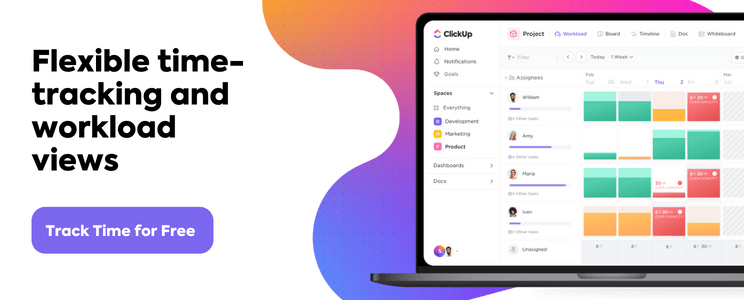

It’s one thing to work with a ton of resources. But it’s an entirely different ball game to know how to get the most out of those resources with resource constraints in the mix.
How do you deal with the most popular resource constraints—time, cost, and project scope—when you’re limited to all three? What if you also happen to be working with mismatched team skills?
While the best approach to resource constraints isn’t a one-and-done solution for every team, there are plenty of principles, strategies, and tools to help you manage any constraints thrown your way.
Let’s dive in deeper.
What Are Resource Constraints?
Resource constraints are a set of restrictions or limitations that project managers must abide by or consider when managing a project. For project managers, it’s important to be aware of these restrictions to successfully complete a project on time and within budget.
Examples of common resource constraints
Generally, company resources are divided into two categories:
- Intangible resources: ideas, processes, skills, and intellectual property
- Tangible resources: Software, materials, real estate, and labor
Each team will manage a similar list of resources, whether it’s hours worked, employee skills, proposed budgets, materials, or overall manpower. You’ll likely have to manage different types of constraints across specific resources such as:
- Labor (employees, contractors, interns, skills, volunteers)
- Communications (types of meetings, conversations)
- Materials (equipment, tools)
- Financial resources (budget, funding, expenses)
- Intellectual property (processes, ideas, knowledge)
- Real estate (marketing materials, space, office, workspace)
- Time (resource calendars, deadlines, schedules, milestones)
- Software (applications, platforms)
Keep in mind that project resources are the tools you work with to reach a goal. The constraints are the limits imposed on those tools.
The 4 types of resource constraints
For the most part, resource constraints fall within four different variations for businesses and in project management. Let’s take a look at each of the project management constraints to understand the common roadblocks:
1. Time

Time management is one of the most common resource constraints. These time resource constraints limit the number of days, hours, and minutes that a project takes to complete, either due to external factors such as deadlines set by the client or internal factors like how much of each resource is actually available.
TIME CONSTRIANT EXAMPLE
A software development company is tasked with building a mobile application for a client within a strict deadline. However, two developers are on PTO in that time frame. Due to a shortage of developers, the project manager can prioritize tasks across the team, manage sprints, and maintain an accurate log on hours worked, so the it’s easy to know who’s work can be shifted and how the project can be split up with the limited team.
2. Cost

Cost constraints are also an important factor to consider toward resource availability, as they set a limit on the amount of money allocated to each project. This constraint usually comes from either the client or the project manager, depending on your initial business agreement or planned project scope.
COST CONSTRIANT EXAMPLE
A non-profit organization needs to organize a charity event on a limited budget. The project manager can outsource some tasks to volunteers and rely on free or low-cost resources. With ClickUp, they can track expenses and ensure they stayed within the budget—so the project manager prioritizes the most critical aspects of the event to ensure success and to avoid any potential resource constraints.
3. Resources
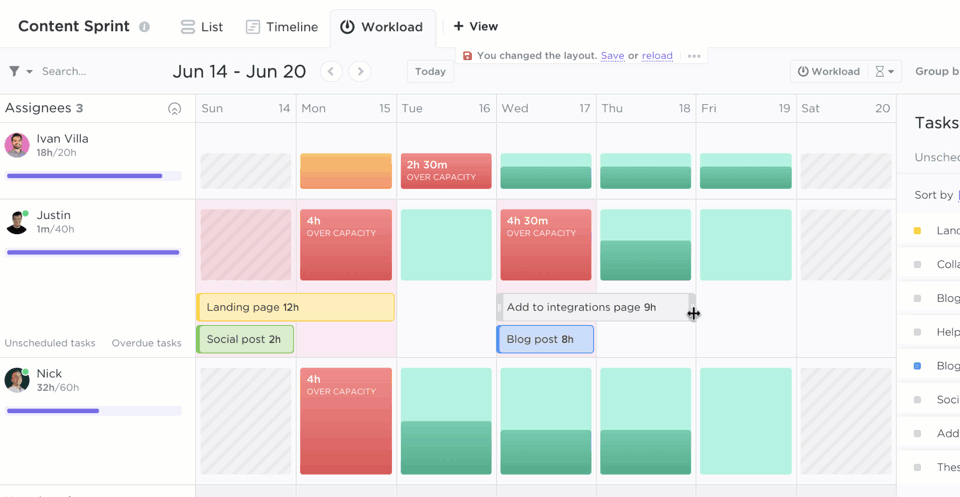
Resource constraints are limitations on the resources, such as personnel and materials, available to the project manager. This type of constraint can also be imposed by external project resources, such as the client or the vendor, or by internal resource availability, such as your own company.
RESOURCE CONSTRIANT EXAMPLE
A construction company hired to demolish an old garage may want to limit its resources for bigger projects and demolitions. The project manager can use resource forecasting and capacity planning models to estimate the number of materials and personnel required for the small job without taking employees away from a larger project.
4. Quality
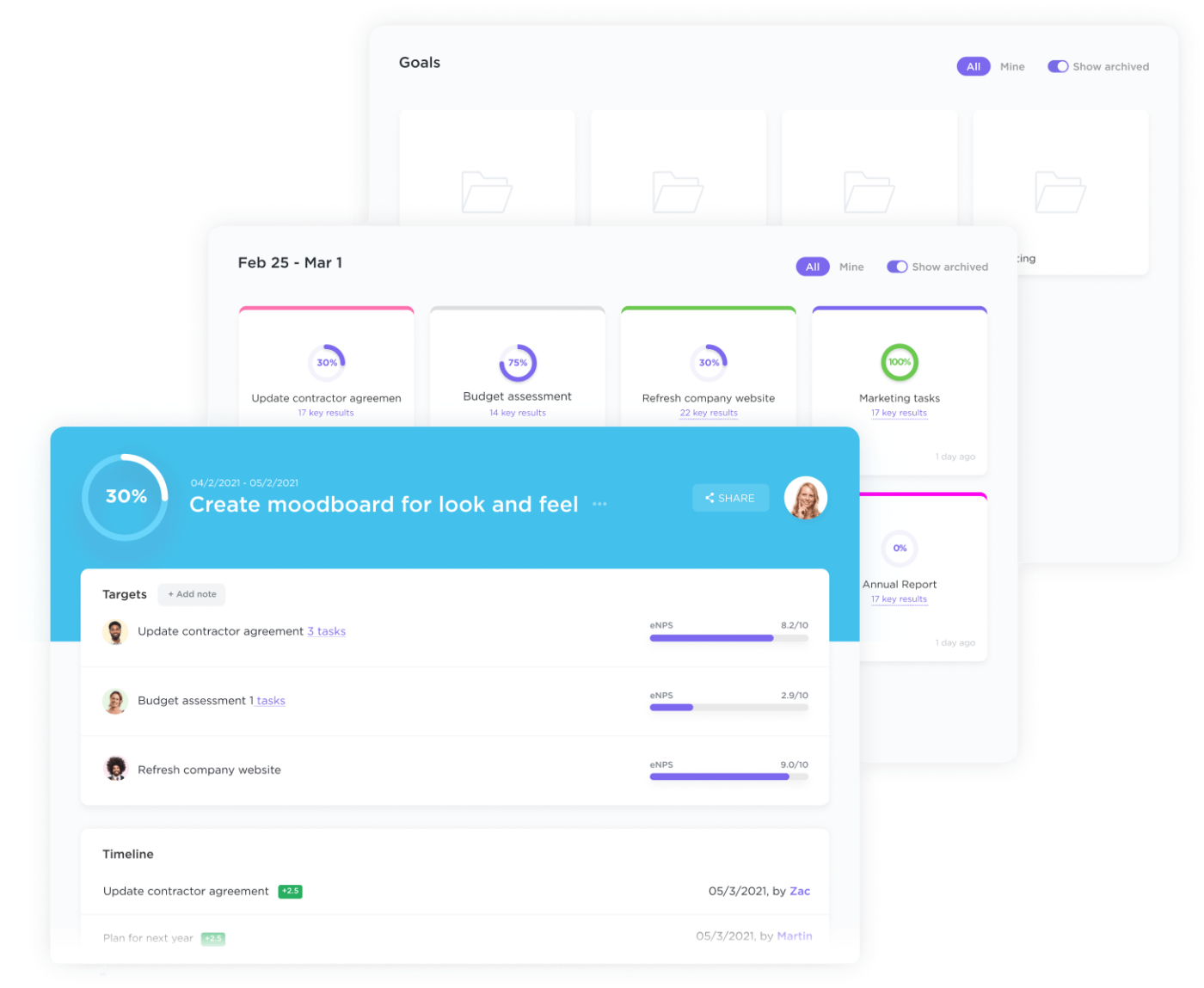
Quality constraints are set to make sure that the quality of a project meets certain standards. The most common quality resource constraints are quality goals set by the client—but the project management lead may also set internal quality constraints to ensure that the project meets their own standards.
QUALITY CONSTRIANT EXAMPLE
A digital marketing agency needs to develop a new website for a client. The project manager must balance the client’s quality goals with the agency’s resource availability. By using quality checklists and goal-setting templates to allocate resources, they can quickly track the progress of the website project and ensure it met the client’s expectations.
How To Identify Resource Constraints
There are several ways to identify resource constraints, but the most important step is to look for potential problems early on in the project as part of your greater resource management strategy. Identifying these constraints requires a thorough understanding of the project and its objectives, as well as the client’s expectations (especially if it’s a service-based product), and the resources on hand for the project.
One way to pinpoint resource constraints is by looking at the tasks that need to be completed and then creating an estimate of not only what project resources you have but how much of each resource you’ll need in worst-case and best-case scenarios.
This is where resource management tools—especially highly customizable ones like ClickUp—play an important part in the planning and project management process. As you see the completion of a project from end to end, having a centralized and easy way to track your progress and project resources is key. This means taking note of tasks like:
- Tracking and assigning tasks
- Keeping an accurate log of hours spent
- Tracking budgeting spend
- Updating project management milestones
- Managing sprints
- Visualizing project capacity
- Centralizing and storing project docs
Project managers also need to consider potential roadblocks that may slow down progress or any changes in the project scope that may affect how they’re managing resource constraints. Adding checkpoints like periodic reviews of these project management constraints should be standard practice to ensure your team has everything they need at every step of the journey.
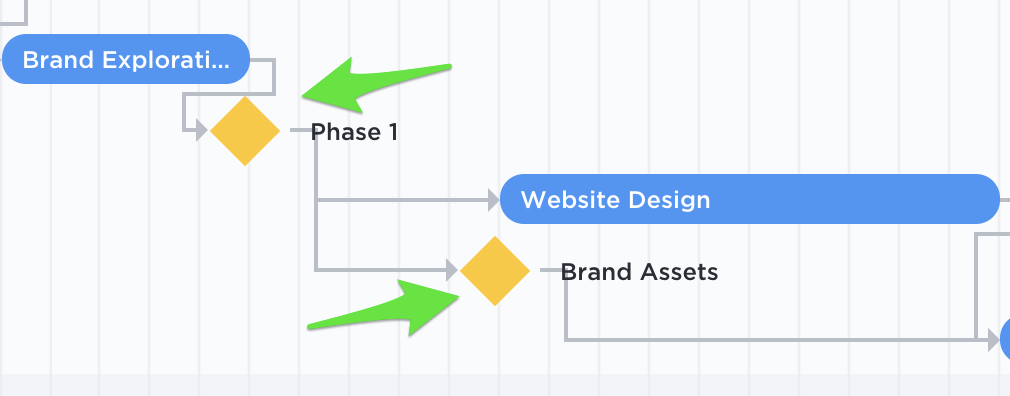
Some projects (and future projects) do require specific resources that are not readily available, so it may be necessary to find alternative solutions or plan your project timelines around when those resources become available.
Identifying the project scope, milestones, and dependencies helps highlight ny potential resource constraints coming your way.
6 Resource Constraint Solutions
It’s important to know what the possible solutions to resource constraints in a project are—that way you’re ready if things don’t go as planned. Whether you’re forecasting, understanding your capacity planning, or analyzing your current status, we’ve got a solution for you!
Here are six solutions to better manage your resources:
1. Templates
Template processes can be used to simplify and streamline the project management timeline and resource requirements. Enter ClickUp templates!
Everything from resource planning templates to premade matrix analyses help project managers quickly identify where resources are needed to ensure that the project remains on schedule. Luckily, there are plenty of premade project management templates to kickstart your analysis so you can better manage resources.
Some of our favorite templates include:
ClickUp Resource Allocation Template

This resource allocation template is a great option to help you manage resources required across your teams. Whether it’s materials, equipment, or people, the ClickUp Resource Allocation Template will keep track of the resources you need to reach project completion.
Additionally, you can use the project management template help with resource contraints and know your required resource availability and when they are needed.
It will help you ensure you have everything you need to complete the project on time and within budget.
ClickUp 2X2 Priority Matrix Whiteboard Template
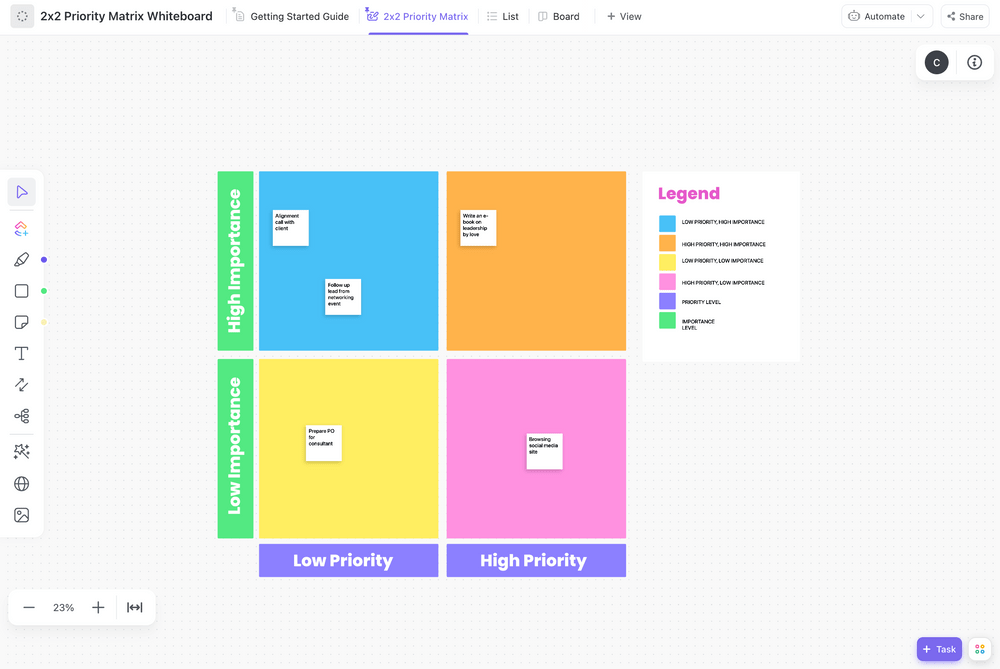
ClickUp’s 2×2 Priority Matrix Whiteboard Template allows you to categorize tasks based on their level of importance and urgency. With Whiteboard project management, you and your team can easily visualize which tasks require immediate attention and which can wait.
By prioritizing tasks, you can make more informed decisions about how to allocate your resources and ensure that the most important tasks get the attention they deserve.
ClickUp Resource Planning Template
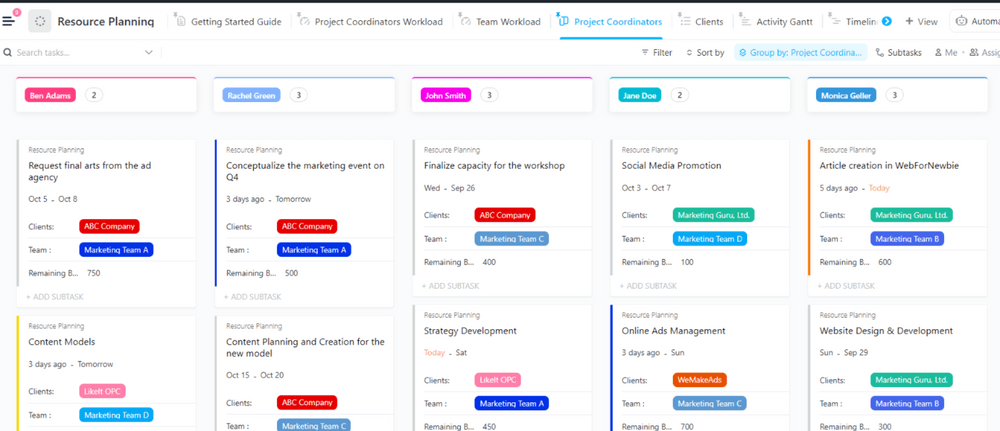
The ClickUp Resource Planning Template helps you manage and allocate resources within your team or department much faster. With this template, you can easily see the capacity of your resources using the Workload view, which provides a visual representation of each team member’s workload.
Within this view, you can better balance the workload across your team and ensure that everyone is working at their optimal capacity. By using this project management template, you can make better decisions about how to allocate your resources.
This ensures your team is working efficiently and effectively.
ClickUp Project Resource Matrix Template

Efficient resource planning is crucial for your future projects because it directly impacts the total cost of resources required. With the ClickUp Project Resource Matrix Template, you have all the necessary information to plan your resources effectively.
This project management template allows you to easily allocate and track resources such as time, manpower, and materials, helping you to make better decisions about how to allocate resources and minimize costs.
2. Scheduling
To optimize scheduling, project managers use several scheduling methods. For example, simply identifying tasks that, grouping them together, and prioritizing them to reduce time spent on project completion is already a step in the right direction.
If you find that there are not enough resources available to complete the project on schedule, it may be necessary to adjust the project deadlines. This may involve pushing back deadlines, or extending them past their original expiration date, which may mean you’ll also need to adjust scheduled dependencies.
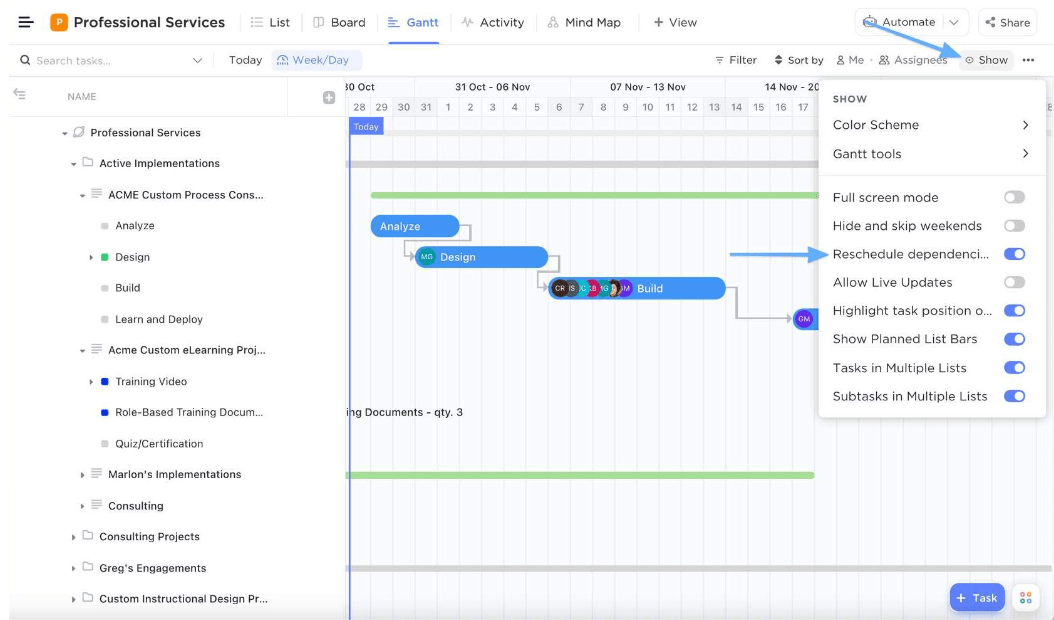
Project dependencies refer to tasks or activities within a project that are reliant on one another. In other words, a project dependency is a relationship between tasks where the completion of one task is required before another task can begin in your specific schedule.
Things like a Timeline view, Gantt Chart, or simply performing resource leveling will drastically help you understand what the schedule looks like and how you can acheive it. Your project resources shouldn’t always have to drastically change your shcedule.
3. Delegation
Delegating tasks to team member is all about matching tasks with skills and availability. If it is determined that there are not enough resources available to complete the project, it may be necessary to hire additional resources.

This may involve recruiting new team members or contracting out services. On the other hand, if there aren’t enough resources available to complete the project as planned, project managers may also limit the project scope.
Reducing the number of tasks involved or cutting back on the project’s intended goals are two examples of this. That’s why having the ability to delegate project tasks is a critical feature in your resource management software.
4. Estimation
Estimation techniques involve predicting the duration, cost, and resources needed for the project’s completion. The better your estimates, the less hurdles you’ll experience throughout the process.

The best resource management software not only allows you to track time estimates, but to do so your way. ClickUp’s time tracking features let you start and stop time from any device, so you can easily hop between project tasks.
5. Automation
ClickUp helps with estimation by providing customizable templates, centralized data storage, and visualizations of project capacity and milestones so its easy to make changes and automatically keep everyone updated.
Automation tools reduce the time and cost associated with completing tasks and simplify project management. By using techniques like setting and automating milestone reminders, automating project status changes, and customizing and setting priority changes, project managers work quickly and save time.
For automation needs, there’s ClickUp—you’re able to set automated triggers and task assignments with different levels of complexity.
6. Outsourcing
Outsourcing is used to reduce the cost associated with completing a project and increase the availability of resources. Methods like using outsourced resources from a third-party contractor or using an external resource pool (think temporary worker agencies) help greatly in managing resource constraints when you’re short staffed or short on a specific skill.
ClickUp helps with outsourcing by providing tools such as charts and customizable dashboards for tracking contractors. Additionally, you can provide specific permissions or enable limited account creation to avoid any unwanted changes.
Do It All With ClickUp
Project planning tools are a must-have when you’re trying to optimize your approach to resource constraints. Resource constraints are a common challenge in project management, and they impact the project’s timeline, budget, and quality.
By identifying and managing resource constraints early on, using appropriate strategies and tools, and learning from past experiences, project managers overcome resource constraints and make the most of what they’re working with.



